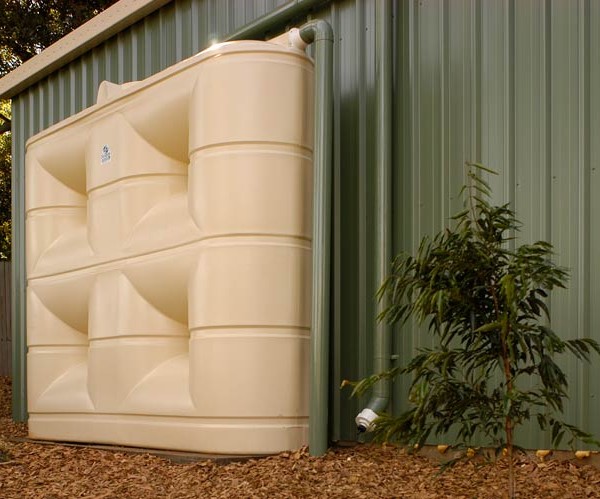Exactly How Slimline Water Tanks Enhance Your Home's Water Efficiency
Exactly How Slimline Water Tanks Enhance Your Home's Water Efficiency
Blog Article
Comprehending the Relevance of Rainwater Tanks in Drought-Prone Regions for Water Safety
In regions susceptible to prolonged dry spells, the duty of rain storage tanks in strengthening water safety is a subject of expanding importance. As communities face the difficulties of water scarcity, recognizing the importance of these containers goes beyond plain collection of rainwater. Rain tanks function as a vital tool in mitigating the effect of water scarcities by offering a lasting source of water for different needs. Nevertheless, real value of rain containers prolongs much past simple storage space; it encompasses resilience-building procedures and the promo of long-term water preservation strategies. This complex method to water protection warrants a closer assessment of the duty rain tanks play in guaranteeing a dependable water throughout times of drought.
Advantages of Rain Containers
Making use of rainwater tanks provides a sustainable option for augmenting water supply and enhancing water safety and security in household and business settings. One of the main advantages of rain tanks is their capability to minimize dependence on mains supply of water. By catching and keeping rain that drops on roofs, this alternative source can be made use of for various non-potable functions such as watering, purging commodes, and cleaning clothes. This not only conserves treated alcohol consumption water however also lowers water bills for individuals.

Rain Harvesting Strategies
Rain harvesting methods include a variety of approaches designed to successfully gather and save rain for numerous purposes, adding to water conservation and sustainability. One typical method is the installment of roof catchment systems, where rainwater is accumulated from the roof of a building and routed to a tank. This technique is relatively simple and cost-effective. An additional preferred method is making use of above-ground or underground tank to keep rainwater for later usage. These storage tanks come in various dimensions and materials to suit various requirements and can be connected to the existing pipes system for simple access.

Additionally, rainfall gardens and permeable sidewalks are innovative methods that entail landscaping or paving surfaces in a manner that permits rainwater to percolate into the ground, restoring groundwater reserves. Additionally, contour farming and terracing are farming techniques that help catch rain and prevent soil erosion in sloping surface. By executing these varied rain harvesting techniques, neighborhoods can boost water safety and strength in drought-prone regions while promoting sustainable water administration techniques.
Importance of Water Safety
Making certain dependable access to tidy and enough water sources is critical for maintaining human health, financial development, and ecological health. Water safety and security is a crucial element of social strength, especially in regions prone to dry spells and water scarcity. Adequate water security encompasses various dimensions, including availability, quality, and ease of access of water for domestic, farming, commercial, and ecological requirements.
Water safety plays a critical duty in advertising public wellness by minimizing the occurrence of waterborne conditions and making certain sanitation facilities. Economically, water security is important for agricultural performance, commercial procedures, and total financial development. Slimline water tanks. Additionally, water safety and security is closely linked to why not look here environmental sustainability, as it sustains ecosystems, biodiversity, and total environmental balance.
In drought-prone areas, water protection becomes much more critical because of the increased risk of water scarcities. Executing strategies like rainwater harvesting, water recycling, and reliable water administration practices can dramatically improve water security in these locations. By prioritizing water protection, neighborhoods can better hold up against the effects of environment change, populace growth, and various other challenges that endanger water availability.
Enhancing Water Durability
With enhancing international water obstacles, building strength in water supply has become a crucial emphasis for lasting development efforts. Enhancing water strength entails carrying out approaches to make sure water availability and quality in the face of changing environmental conditions, such as droughts, floods, and contamination.
One trick facet of boosting water strength is advertising the use of rainwater tanks in drought-prone regions - Slimline water tanks. Rainwater tanks act as an effective means of capturing and storing rainwater for later usage, reducing dependence on limited freshwater resources throughout completely dry durations. By integrating rainwater harvesting systems into water management plans, communities can enhance their ability to withstand water deficiency and keep water security

Lasting Water Preservation
Amidst intensifying water obstacles, the sensible management of water resources with lasting preservation you can find out more practices is crucial for making certain long-term environmental stability and societal wellness. Lasting water preservation requires the efficient use water resources to satisfy existing demands without compromising the ability of future generations to satisfy their very own needs. By implementing strategies such as rainwater harvesting, greywater recycling, and water-efficient technologies, communities can decrease water waste and minimize stress on freshwater resources.
Moreover, lasting water preservation techniques add to ecosystem health and wellness by preserving ample water degrees in rivers, lakes, helpful resources and marshes, sustaining biodiversity, and maintaining all-natural environments. These techniques additionally play a crucial role in reducing the effects of climate change by helping to adapt to transforming rainfall patterns and water schedule.

Verdict
In final thought, rain tanks play a critical role in improving water security and durability in drought-prone areas. By utilizing rainwater harvesting methods, areas can reduce their dependence on typical water sources and promote sustainable water preservation methods. This not only assists minimize the impacts of water deficiency during droughts yet also adds to lasting water safety and security and resilience when faced with climate adjustment challenges.
Report this page